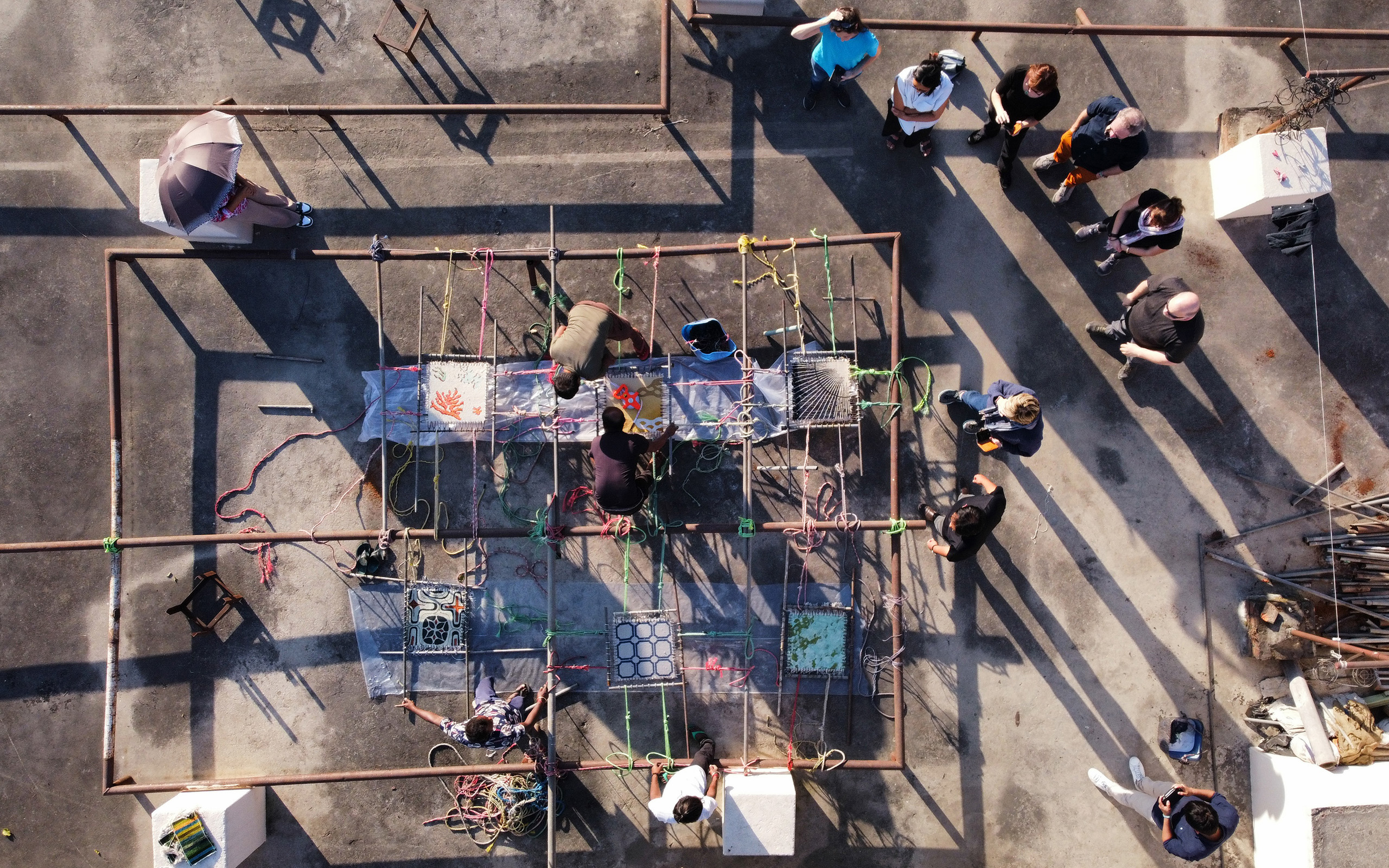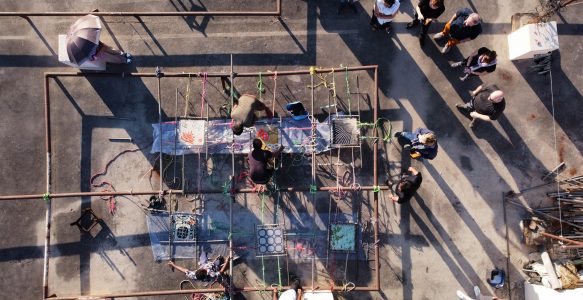Elevate Your Understanding of Carpetry
‘Open Studio’ is an immersive two (2) week learning intensive created for those who desire a more elevated and comprehensive understanding of the carpet design and crafting process – carpetry* as I prefer to call it. Whether you are a designer/artist/creative already working – or (k)not – in textiles and rugs, a showroom owner or salesperson trading in Nepali-Tibetan carpets, a seasoned industry veteran looking to expand upon or establish a repertoire of skills unique to Nepali-Tibetan carpet making, or perhaps an avowed aficionado with a quest for knowledge, ‘Open Studio’ offers a robust educational program which illuminates the complexities and beauty of early 21st century Nepali-Tibetan carpet making in Kathmandu, Nepal.
Ideated by Urgyen Wangchuk of Zekö Designs, Tenzin Norbu of Karnor Carpet Manufacturers, and me, Michael Christie, The Ruggist, the ‘Open Studio’ concept addresses the circumstances of this era, introducing participants to the realities of carpetry in order to provide genuine authenticity in salesmanship, service, and design. After all, how best to design and/or sell something than by understanding how it is made?
The casual, yet structured curriculum provides extensive hands-on studio activities, engaging lectures, and enriching field trips in addition to nearly unfettered access to facilities and information in order to foster a new paradigm for carpetry in Kathmandu, Nepal. Participants of ‘Open Studio’ gain an in-depth understanding of the nature of Nepali-Tibetan carpetry from past carpetry traditions to the socioeconomic and design realties of this era. And, by leveraging industry savoir faire and expertise to the further benefit of participants, ‘Open Studio’ provides contextualized insight and perspectives which add nuänce to the storied and time honoured craft of Tibetan carpet making. Moreover, all of this unparalleled access takes place while participants work in situ at the Karnor Carpet Manufactory as skilled craftspeople weave and craft participant designed maquettes – samples if you rather – in real time.
‘Open Studio’ is about forging a closer connection between maker and consumer, bridging the information gap betwixt trading pairs be they maker and consumer, buyer and seller, exporter and importer, or the like. And then due to collaborative dialogue, to perhaps imagine new possibilities for transformative change to an industry already and continuously in flux. All that, and we have fun!! (If you like rugs, delicious food, and adventure!)
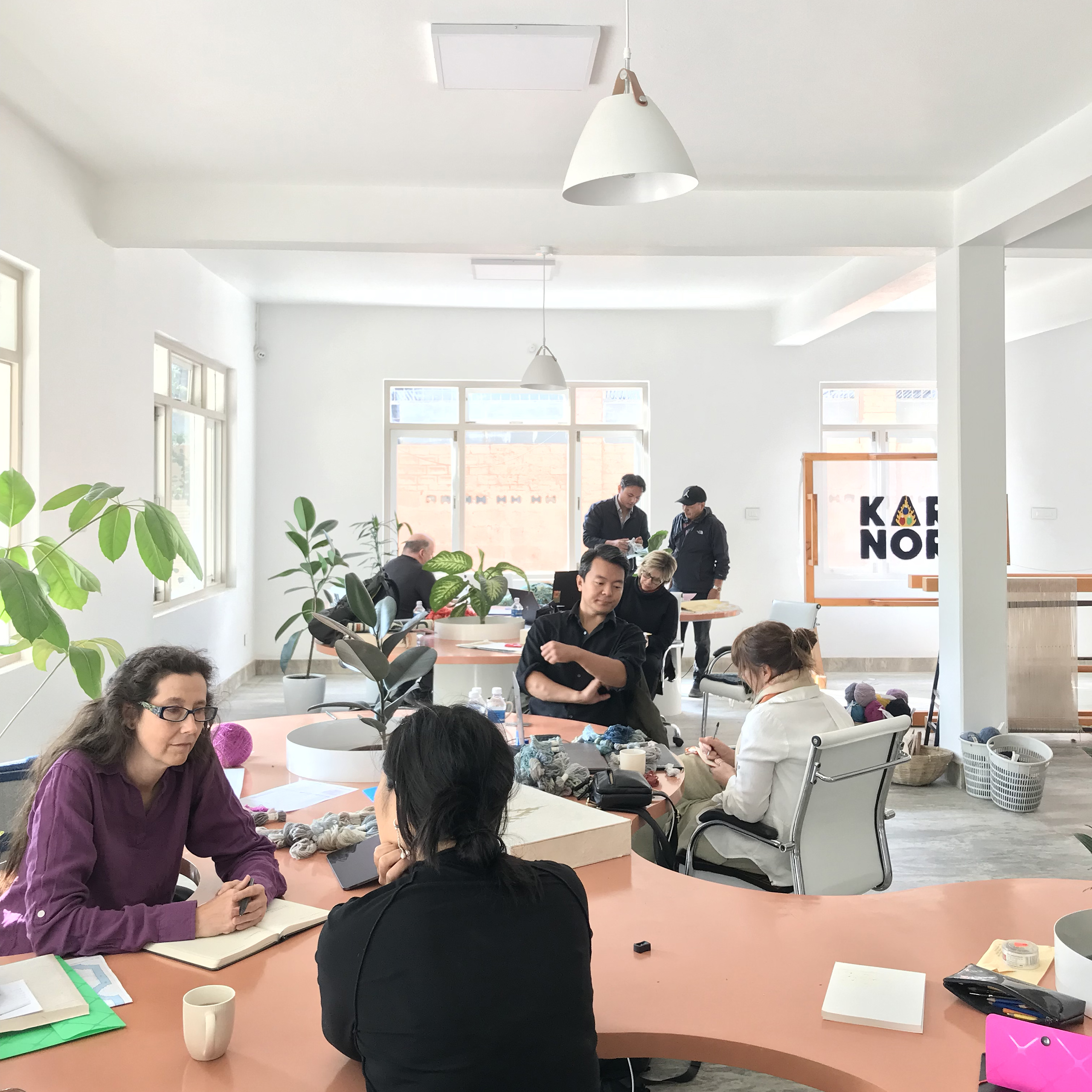
‘Open Studio’ sessions typically occur in the Autumn (October/November) on the campus of Karnor Carpet Manufactory in Kathmandu, Nepal. To learn more and to register (during registration period) please visit the Open Studio website.
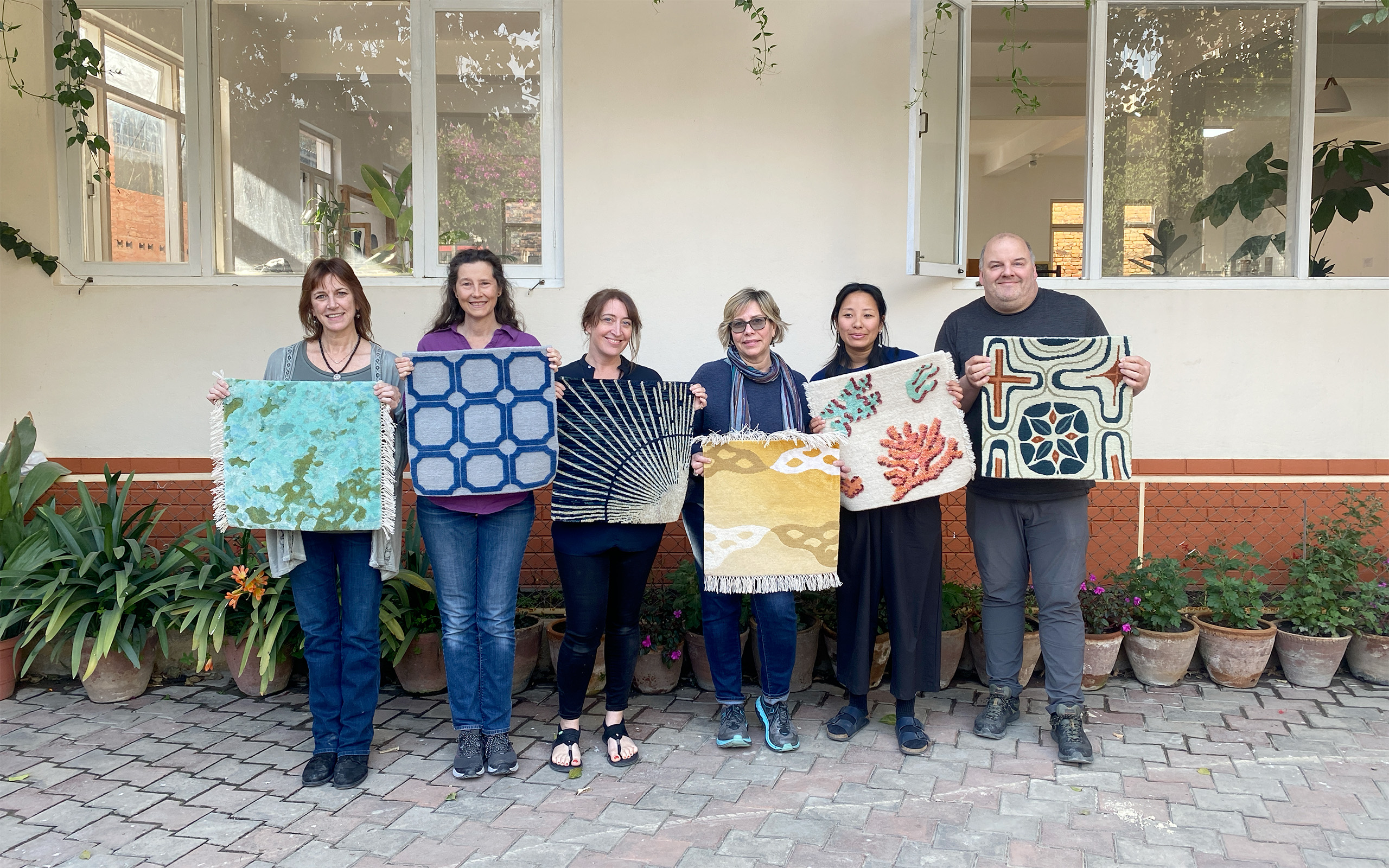
A Meaningful In-Depth Experience
As an aficionado of Nepali-Tibetan carpet weaving I have long sought to thoroughly understand carpets as more than just design applied to blank/white canvas. But this tends to be a more academic pursuit which can easily find itself at odds with the commercial concerns of an industry largely controlled by the demands of occidental designers, buyers, and traders – if not ultimately by end consumers. At some point, the precise determination of which remains unknown, my former ‘commercial’ career in the sales of rugs and carpets – such that it was – ceased to exist thus ushering in a period of intellectual pursuit over that of commercial concerns or trading.
I’ve been fortunate in these pursuits to be exposed to much which often remains hidden, even to those who work in the trade. With no negative connotations toward any individual, it is this ignorance and naïveté, a lack of exposure to information, that creates an environment in which misinformation can replace information. A question asked of a salesperson but unanswered. A void which must be filled… …with something. It’s the ‘You know how it is…,’ statement from someone deflecting because perhaps they themselves do not know. I know I was guilty of this as a younger salesperson, I was guilty of it by foolishly removing commerce from the academic (for they are always intertwined), and I likely remain guilty of it in many other regards.
To address what I see as this sizeable gap in information, I designed the ‘Open Studio’ curriculum to illustrate, as much as possible and as best able with the tools afforded me, the processes of carpetry to audiences both appropriate and eager to gain this insight; ‘Open Studio’ is not intended nor designed for the, dare I say, layperson or end consumer. Rather for niche audiences of people who see themselves as more than salespeople or designers. They see themselves as exceptional salespeople and prolific designers, extraordinary people who can speak authentically about an anachronistic product: handknotted rugs and carpets. And moreover, they can speak the right words based on the right thoughts to a purchasing cohort, an emerging consumer demographic, which is not only in tune with tactile handwërk products, but is unprecedentedly large and set to inherit vast wealth.
Since time immemorial all weaving, including Tibetan carpet making has continually evolved to suit the needs of the era; ‘Open Studio’ is part of my approach to the next era of carpet making for I believe the future consumers of handknotted rugs and carpets will be well served by people who truly understand the product; it is my hope that ‘Open Studio’ will help facilitate renewed excellence in carpetry.
‘Meaningful’
‘For three decades I have worked in the rug industry as an academic and a retailer. ‘Open Studio’ now stands as the single most meaningful educational experience of my career.’
Lisa Slappey, Ph.D., co-owner of Post Modern Rugs in Houston, Texas, United States.
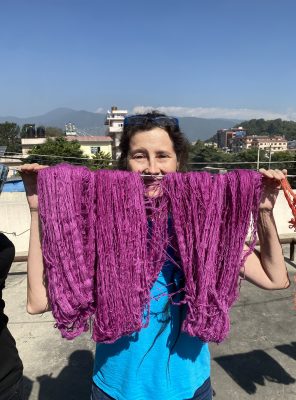
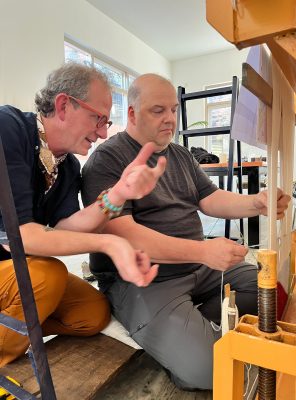
‘In-Depth’
”Open Studio’ provided an in-depth understanding of rug design and production you cannot get stateside.’
Randy Hyde, owner of Renaissance Rug Cleaning in Portland, Oregon, United States.
‘Experience’
‘Arrive, experience, learn, and grow!’
Deborah Hernandez, owner of The Rug Designers Studio in New York, New York, United States.
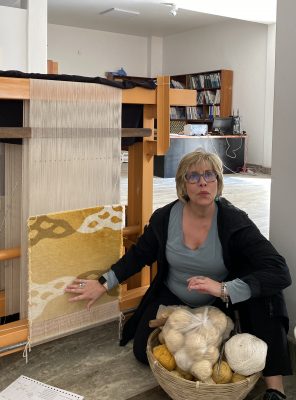
Fostering a New Paradigm
It should not be understood that I have critique of the extant system merely for the sake of critique, rather it is a philosophical shift which questions why we must remain beholden to systems from the past when the profoundly different conditions of today warrant changed if not novel approaches. In summary, traditions do and must inform, telling us where we have been, but they are not sacrosanct nor inviolable. They were conjured in the mind of someone, at sometime, and then for reasons – known, unknown, or otherwise – lingered in our collective embrace. But just as weavings have a lineage, each iteration informed by the structures that precede it, so too must our methodologies and practices be informed, though not dictated, by what has come before. It’s Modernism in the truest sense, being of this particular moment. This fundamental philosophy of adaptation and intentioned change now guides my thinking broadly, and influences my role as liaison and instructor during ‘Open Studio.’
The circumstances of this time are such that a generational shift is taking place within the trade of handknotted rugs and carpets and while none of us can foresee the future, I do foretell of a changed business environment for those who trade in handknotted rugs and carpets; as if that were not already a metaphysical certainty. We can either choose to be a passive participant, a victim of circumstance if you will, or we can choose to be active participants, working at the vanguard to blaze a new path for what is a foundational technology of human civilization: weaving.
‘Open Studio’ is not intended to transform makers into direct-to-consumer retailers – with utmost respect to everyone, this is a fate I would not wish on either party. Rather it is intended to connect a new generation of people interested in working more closely with makers, so as to collaboratively build new businesses, operating under new criteria – new paradigms, new systems – thus allowing handknotted rug and carpet making to continue. All the while still satisfying the wants of end consumers, regardless of what that particular model or system may come to look like. As I FaceTime with colleagues in Nepal I cannot help but ask, ‘If the technology behind the device in my hand transformed so much, why too cannot carpetry and the trade thereof be transformatively changed? Especially if it can more directly benefit the weaver.’ The latter, a seemingly sentimental dream viewed as unattainable by those beholden to the ways of the past.
I have at times used the term ‘colonial’ to describe the industry, the occidental trade of handknotted rugs and carpets. I say this because while ‘colonial’ today does indeed present differently than when the sun never sat on a particular Isle’s empire, it is less dissimilar in concept. Wealthy countries (formerly called: occidental, ‘Western,’ developed, or worst of them all, civilized) living in excess and luxury at the expense of poor or impoverished countries; themselves able to be referenced by myriad terms.
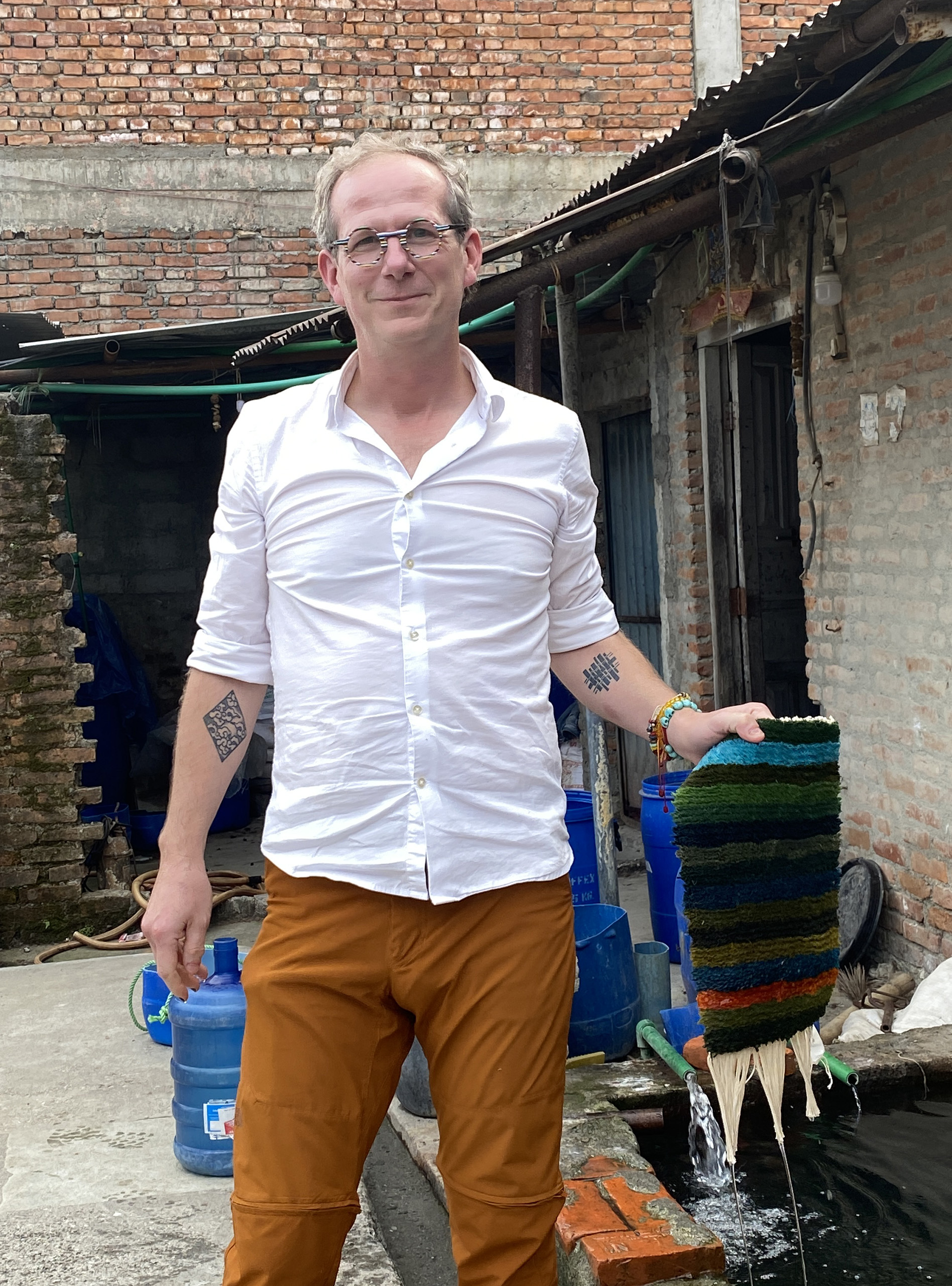
Par exemple, I live in North America and my existence is such that per capita, I consume – by huge margins – more than a person anywhere else on the planet. And while I did not choose to be this statistically over-consuming asshole (Please excuse my language!), I do remind that by taking more than an equitable share, we create unsustainable systems. On a planet with finite resources, except for energy, we should feel a moral obligation to address the fundamentally colonial (and thus unsustainable) nature of trade, in favour of benefiting everyone equitably. As juvenile or utopian or ridiculous or socialist as it may sound, it is about using the privileges of my, perhaps our, existence to instigate or foment change to the betterment of the entire handknotted rug and carpet supply chain (and in truth, everything else). Either that or we can just keep being assholes to one another. 🤷🏻♂️ (Again, please excuse my language!)
‘Open Studio’ sessions occur biannually, in the Spring (April) and Autumn (November) on the campus of Karnor Carpet Manufactory in Kathmandu, Nepal. To learn more and to register please visit Karnor Carpet Manufactory’s North American partner, Zekö Designs
Cultural Perspectives
One element often overlooked in the trade of handknotted rugs and carpets is a consideration for the culture in which the crafting of said wares takes place. This is not to say the heritage of carpetry is not vaunted, for it is, but this is often done as though the conditions of the past which gave rise to said traditions and heritage still exist today; they most often do not.
The more I delved into carpetry, the longer I worked in trade media, the more I came to realize this disconnect between the marketing language used by traders to sell rugs and carpets and the reality of 21st century carpetry, with this agitation between incongruous realities acting as an inhibitor to progress. The industry is still selling a nostalgic version of itself in which the weaver is artist, when in truth modern carpets are often ‘designed’ by someone with no particular understanding of weaving; it’s a disparity in understanding and equitability which seemingly demands those less privileged remain frozen at some arbitrary point in history; particularly one which serves to provide a romanticized story used to sell luxury wares that are – many times – presented as more fantasy than fact.
The ‘Open Studio’ program does not seek to portray any element of modern carpet making as any more or less than it is. Rather, it provides access to a modern manufactory located in the cosmopolitan city of Kathmandu, Nepal, and with it the totality of experiences necessary to inform new and fresh perspectives on the part of participants. Participants who are exposed to the breadth of cultures, contrasts, and possibilities that exist in a place transitioning from the Hippy Trail years of a purported Shangri-La, into a modern, connected cacophonous metropolis in a rapidly developing country. By contextualizing carpetry – particularly through the lens of the production environment – ‘Open Studio’ adds an element of cultural understanding I view as critical to fostering new paradigms for this storied craft.














